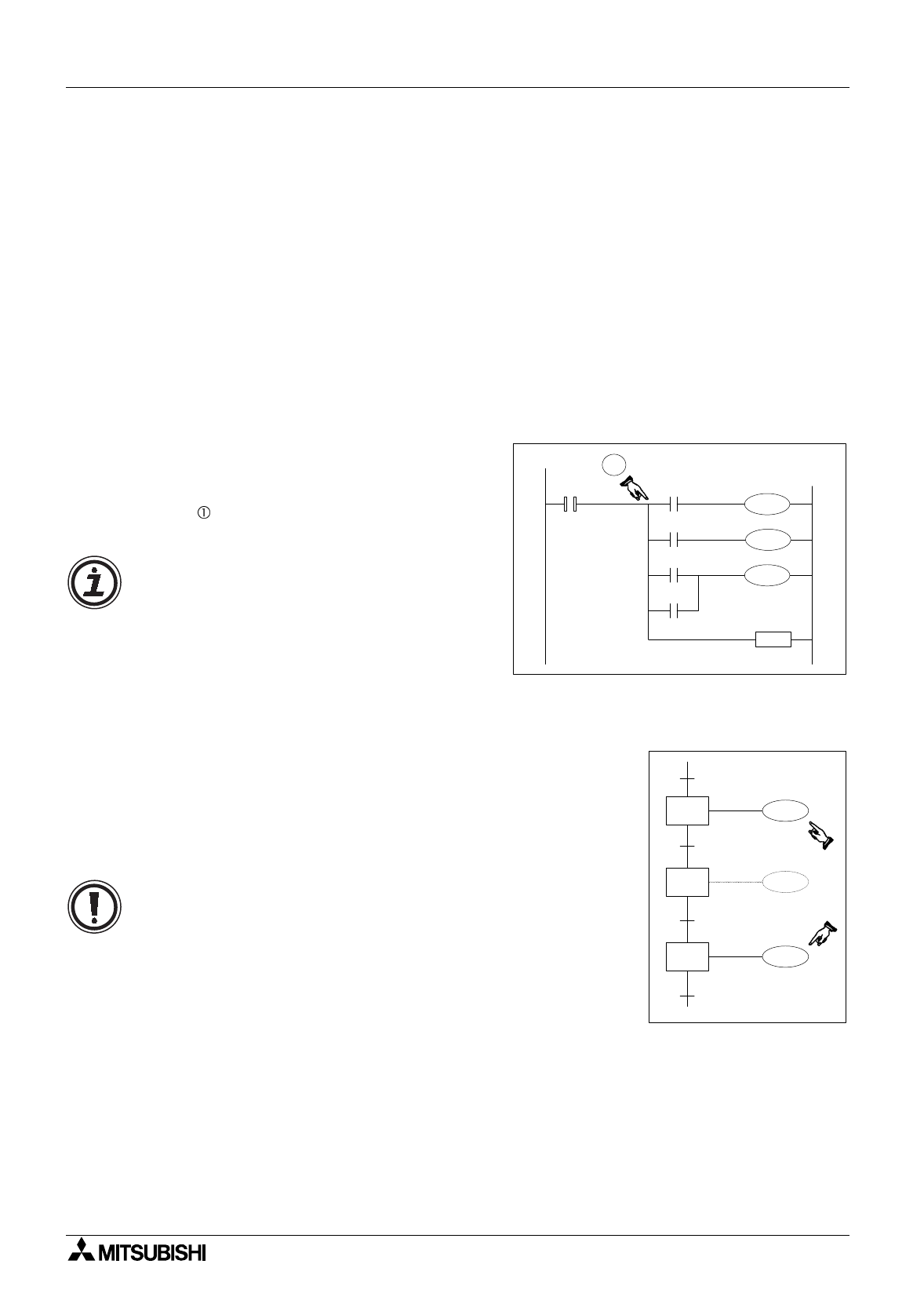
FX Series Programmable Controllers STL Programming 3
3-7
3.5 Rules and Techniques For STL programs
It can be seen that there are a lot of advanta
g
es to usin
g
STL st
y
le pro
g
rammin
g
but there are
a few points a user must be aware of when writin
g
the STL sub-pro
g
rams.
These are hi
g
hli
g
hted in this section.
3.5.1 Basic Notes On The Behavior Of STL programs
• When an STL state becomes active its pro
g
ram is processed until the next step is tri
gg
ered.
The contents of the pro
g
ram can contain all of the pro
g
rammin
g
items and features of a
standard ladder pro
g
ram, i.e. LoaD, AND OR, OUT, ReSeT etc., as well as applied
instructions.
• When writin
g
the sub-pro
g
ram of an STL state, the first vertical ‘bus bar’ after the STL
instruction can be considered in a similar manner as the left hand bus bar of a standard lad-
der pro
g
ram.
• In normal pro
g
rammin
g
usin
g
dual coils is not an acceptable technique. However repetition
of a coil in separate STL pro
g
ram blocks is allowed.
STL
S005
Y000
Y011
Y014
RET
X001
X000
X012
X013
1
Each STL step makes its own bus bar. This
means that a user, cannot use an MPS
instruction directl
y
after the STL instruction
(see ), i.e. There needs to be at least a
sin
g
le contact before the MPS instruction.
Note:
Usin
g
out coils and even applied
instructions immediatel
y
after an STL
instruction is permitted.
M111
S 30
S 31
S 32
M111
M112
This is because the user can take advanta
g
e of the STL’s
unique feature of isolatin
g
all STL steps except the active
STL steps.
This means in practice that there will be no conflict between
dual coils. The example opposite shows M111 used twice in a
sin
g
le STL flow.
Caution:
The same coil should NOT be pro
g
rammed in steps
that will be active at the same time as this will result in the
same problem as other dual coils.


















